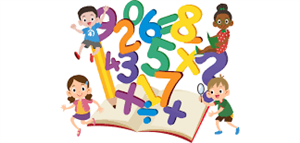- Southwest Elementary Global Academy
- Current Units of Study
Murphy, Tracy
Page Navigation
-

Quarter 3 Math Standards
NC.5.NBT.5 Perform operations with multi-digit whole numbers. Demonstrate fluency with the multiplication of two whole numbers up to a three-digit number by a two-digit number using the standard algorithm.
NC.5.NBT.6 Find quotients with remainders when dividing whole numbers with up to four-digit dividends and two-digit divisors using rectangular arrays, area models, repeated subtraction, partial quotients, and/or the relationship between multiplication and division. Use models to make connections and develop the algorithm.
NC.5.NBT.7 Perform Operations with decimals.
Compute and solve real-world problems with multi-digit whole numbers and decimal numbers.
- Add and subtract decimals to thousandths using models, drawings or strategies based on place value.
- Multiply decimals with a product to thousandths using models, drawings, or strategies based on place value.
- Divide a whole number by a decimal and divide a decimal by a whole number, using repeated subtraction or area models. Decimals should be limited to hundredths.
- Use estimation strategies to assess reasonableness of answers.
NC.5.NF.1 Use equivalent fractions as a strategy to add and subtract fractions.Add and subtract fractions, including mixed numbers with unlike denominators using related fractions: halves, fourths and eighths; thirds, sixths, and twelfths; fifths, tenths, and hundredths.
- Use benchmark fractions and number sense of fractions to estimate mentally and assess the reasonableness of answers.
- Solve one-and two-step word problems in context using area and length models to develop the algorithm. Represent the word problem in an equation.
NC.5.NF.4 Apply and extend previous understandings of multiplication and division to multiply and divide fractions.
Apply and extend previous understandings of multiplication to multiply a fraction or whole number by a fraction, including mixed numbers.
- Use area and length models to multiply two fractions, with the denominators 2, 3, 4.
- Explain why multiplying a given number by a fraction greater than 1 results in a product greater than the given number and when multiplying a given number by a fraction less than 1 results in a product smaller than the given number.

